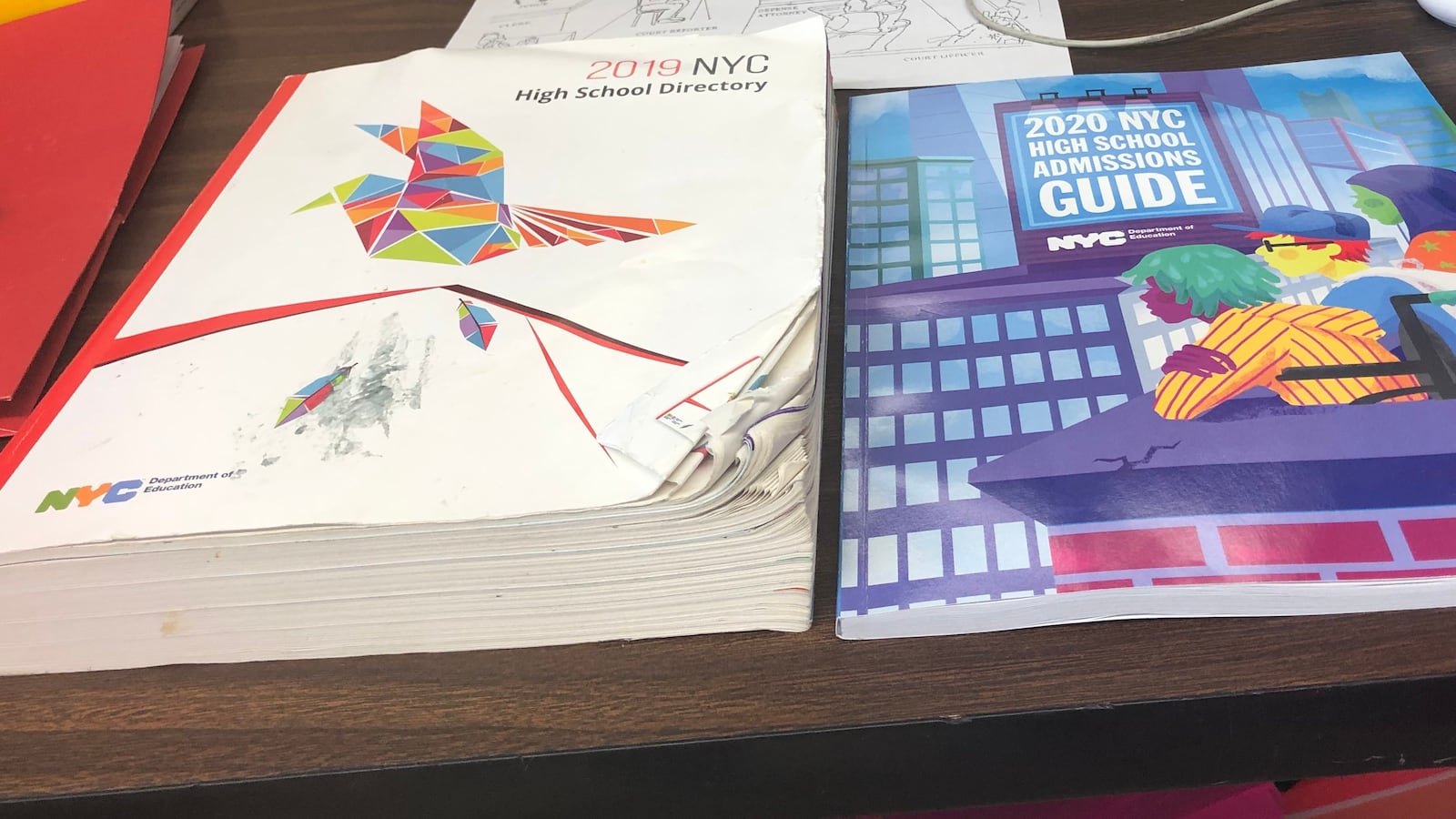New York City’s iconic high school directory, a hefty tome that came in at 630 pages this year, is slimming down and moving mostly online.
The thinner guides distributed to rising eighth graders will now feature only general information and point students to an online portal for more detailed, school-by-school data. The change is designed to simplify the complicated high school admissions process, officials say, and should make it easier for the department to update policy changes or inaccurate information that has shown up in past guides.
But the overhaul raises questions about whether families who don’t have easy access to the Internet will get the information that they need — and whether this change is addressing larger issues with the high school admissions process.
“The whole push is equity, so how is that equitable for our kids who don’t have consistent cell phone coverage?” said one middle school guidance counselor in the Bronx, who asked not to be named because she wasn’t authorized to speak to the press.
In New York City, eighth grade students apply to and rank their top 12 high schools, which they’re matched to through an algorithm at the education department’s enrollment office. One-third of the city’s roughly 400 high schools select students based on different criteria, and some families find the volume of information — and the whole process — daunting.
In the past, every eighth grade family was given a paper copy of a substantial guide, which features information about college enrollment data, Advanced Placement classes, special programs, and other details. The directory was also available as a PDF online.
City officials said they decided to change course based on feedback from guidance counselors and families. The new, thinner guides are now being distributed to rising eighth graders at middle schools throughout the city from May through June, according to a weekly city newsletter distributed to principals.
The printed guides will have general information, including graduation rate data and results from a safety survey, and will direct families to the online MySchools High School Directory for more information. This is a portal that students used for the first time this school year to apply to middle and high school. Counselors reported the system having its own set of challenges and glitches.
The newsletter describes the online portal as “mobile friendly, searchable, and interactive,” and an official said it will save the department 50 million pages in printing a year.
“The new directories are slimmer, easier to navigate, and include the information that families identified as most important; and putting more information online allows us to make updates throughout the year,” education department spokesman Doug Cohen said in a statement. “We’ll continue our efforts to make high school admissions easier for our communities.”
Student group Teens Take Charge has pushed the education department to correct inaccurate information they’ve discovered in the directories, such as lists of after-school activities that don’t exist at those schools. At a recent meeting between the department and the teens, education officials committed to ensuring information will be accurate in the online portal, said Tiffani Torres, one of the leaders of Teens Take Charge, though officials did not say how exactly they’d monitor that.
Torres said the change would make it easier to update inaccuracies, but the group still wants more support around the admissions process, such as more workshops for eighth graders (the department offers some workshops for families with seventh-graders). That’s because access to information is key in a process that can be confusing for many families, and which critics argue has helped make New York City’s school system one of the most segregated in the country.
“I went to a middle school in an area where parents don’t really have the time or resources to understand the high school application process so a lot of students totally rely on the books,” Torres said.
Holding more workshops is one option that the Bronx guidance counselor will raise with her school’s principal, specifically to let parents know how to navigate the system if they don’t have consistent Internet access. She’ll broach the subject in conversations with students as she hands out the new guidebooks, she said.
Families will be able to use computers and get trainings on the guide at high school fair events over the next several months, an official said, adding that parents can also visit a Family Welcome Center to use the online system or work with school counselors.
There must be more support than that, both Torres and the Bronx counselor said.
“So if a kid can’t go to the library, for example, or if I’m a parent and I work late hours and I can’t come to the school,” the Bronx counselor said, “how do we best support our families who may not have access to this online system?”


